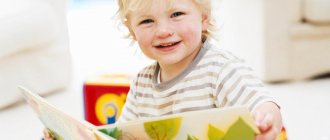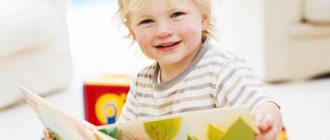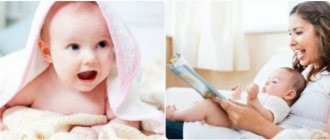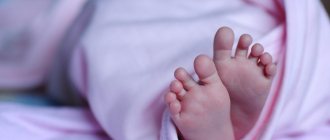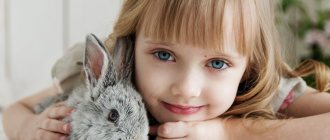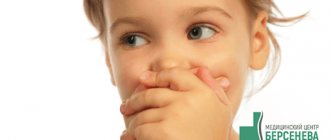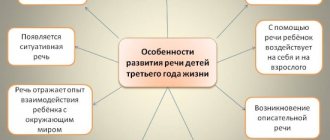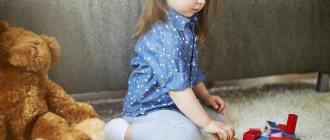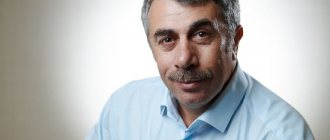By the age of three, most children are already quite independent, they have an idea of the world around them, are armed with some knowledge about objects and their properties, and a child’s speech at 3 years old contains a sufficient number of related words and sentences. After all, they have tested a lot of their knowledge in practice, that is, children have tried out from their own experience how to manipulate objects in their environment, and now they can talk about it with understanding.
A child's speech development at 3 years of age has a particularly wide range for different children of the same age. Some do not experience any difficulties in their statements, are sensitive to the slightest deviation from the norm in the speech of the adults and peers around them, and show interest in the sound analysis of words. At the same time, other children had just begun to construct sentences more or less correctly, and their speech was very far from perfect.
Features of development of children 3 years old (“Munich diagnostics”)
On the one hand, three-year-old children are constantly working motors. They cannot sit still for a long time and quickly change one type of activity to another, since attention at this age is not yet sufficiently developed. On the other hand, 3-year-old children can safely be called conservatives: they like rules, they quickly get used to the daily routine, and preferences in food and games appear. This craving for constancy is explained by the work of basic personality mechanisms that are aimed at ensuring security. What is familiar and predictable to a child causes less fear than what is new and unknown. This age is also notable for the fact that the baby becomes more independent, can defend his interests, stubbornness and whims appear.
To qualitatively assess the psychomotor, speech and communication skills of children, the “Munich Functional Developmental Diagnostics” was created in 1997 in Munich. According to it, at 3 years old a child should be able to do the following:
- Go up and down stairs;
- Jump on one and two legs;
- Catch and kick the ball;
- Do different movements at the same time (for example, shaking your head and clapping your hands);
- Step over obstacles;
- tear paper;
- Sort objects by color, size, shape;
- Build towers from cubes;
- Play games with simple rules;
- Name your gender;
- Orientate yourself in space.
At the age of 3 years, children experience a big leap in physical development. The baby can already run quickly, jump, squat, and turn his body. His movements become more precise and coordinated, and his reaction speed increases. Orientation in space also improves significantly (it is often better developed in boys than in girls of this age).
How to help the speech development of young children
What can we, parents, do from the very birth of a child to ensure that he speaks naturally?
Let us remind you that the sensory channel for perceiving information about the external environment (vision, hearing, taste, smell and touch) is the main one for children in the first years of life. Therefore, the answer lies on the surface: it is necessary to give the child as much information as possible about the world around him, as much as possible of any kind of sensory sensations and stimuli. Let's talk about it.
- Touch. Feeling #1 at first. Mother's warm hands, her gentle touches, stroking, massage, gymnastics, toys of different shapes and textures, finger games - the more of this, the better. Knowledge about oneself, one’s body and its sensations is formed through contact with the environment, so diversify the child’s tactile sensations as much as possible. Water of different temperatures (carefully!), soft fabric and rubber balls, a plastic rattle and a wooden cube, finger paints on a palette, sand in a children's sandbox, beans in a jar, etc. - the world is so rich for training your sense of touch!
- Hearing. Give your baby as much information as possible that he can perceive by ear: the sounds of music, nature, household appliances in the house, street noise from the window and, of course, the sounds of his native speech. Always talk to your baby about everything. Mom does this naturally, because speech accompanies any of her actions: she voices swaddling, feeding, bathing, and putting her to bed. She names objects surrounding the child, pointing at them. When the baby starts to walk, the mother “keeps up the conversation”: she responds to the sounds the baby makes, repeats them and introduces him to adult speech, which the baby will try to imitate as he grows up.
- Vision. We interest the baby in the objects around him so that he learns to focus his vision and maintain his attention on significant objects. To help your child concentrate, you can hang bright colored objects above the crib (for example, balloons, fluffy pom-poms - they are quite light and will certainly attract attention). Some mobile models come with removable toys to help adults provide a stimulating and varied space for their child. This is for the little ones. Later, the arsenal of objects from the surrounding reality can be replenished endlessly, both due to toys in the house, and due to the visual impressions that the baby will receive when he is outside the home: on a city street, on a river, in a forest, in a zoo.
- Taste. Mother's milk, water, teas, juices, pureed and solid food - what a variety of textures and tastes! Introduce your baby to them by gradually expanding the range of products that you introduce into baby food. The sooner a child becomes familiar with basic tastes, the less picky he will be in food later.
When the time comes for the first complementary foods, for example from the “Agusha First Spoon” line, it is important to name the products that the mother offers the baby. Cottage cheese, kefir, juice, fruit puree - this is an opportunity to introduce your child to the names of fruits, vegetables, and talk about animals. For example, about a cow that gives milk, he says “mu” and grazes in the meadow.
- Smell. Getting to know smells not only enriches the perception of the overall picture of the world, but also creates a certain mood, associations and subsequently pleasant memories in the baby. The smell of freshly baked bread and grandma’s jam, autumn leaves and spring melting snow, mushrooms and wildflowers - so many memories behind each of them! Don’t forget about this side of perception, learn smells together with your child, teach him to distinguish them and compare them - what if you have a future perfumer growing up?
- Gross motor skills (movements of large muscles: body, arms, legs). It is important to motivate your baby to move actively from the first weeks of life. If you think your baby needs to be swaddled, be sure to allow enough time for your baby to move his arms and legs freely. As your baby gets older, create a safe space for free movement in the house.
- Fine motor skills (fine movements of the hands and fingers). Only a newborn has never heard of the fact that fine motor skills and speech are connected. This connection is explained by the proximity of the speech motor and movement centers in the brain. Therefore, any activity aimed at stimulating fine motor skills has a positive effect on speech formation. And don’t forget about developing self-care skills from early childhood: a cup, a toothbrush, cutlery, buttons on clothes, zippers and shoelaces are great exercise equipment!
Speech is a product of the work of the muscles and organs of the speech apparatus, and, as in the case of training any other muscle, speech must be developed through consistent and regular exercise. Let's talk about these classes and about the exercises that need to be included in the child's daily “speech exercises”.
Development of fine motor skills in children 3 years old
- Drawing. At 3 years of age, drawing development is at the scribble stage. Despite the fact that the drawings can sometimes turn out to be shapeless, the child puts his own meaning into them. Three-year-olds with well-developed fine motor skills can already draw simple shapes (circle, square, lines). The drawing of a person in 3-year-old children turns out to be primitive, but it already contains a head, body, legs and arms.
- Ability to unfasten zippers and buttons. Although a 3-year-old child still cannot fasten a button or zipper himself, he has already learned how to unfasten them. Encourage your child's desire for independence, because fastening and unfastening various clasps not only perfectly develops fine motor skills, but also stimulates the development of thinking.
A three-year-old child has most hygiene skills. He knows how to wash himself, wash his hands, go to the potty, undress, and tries to eat carefully at the table.
- Toys that require developed finger motor skills. Usually at this age children like to play with small objects; puzzles, construction sets, lacing, and mosaics are used. When giving your child such toys, do not forget about safety precautions and do not leave the child unattended while playing.
- Finger games. Finger gymnastics can be a fun exercise for developing your baby’s fine motor skills. You can find ideas for finger games in the video:
Exercises to prevent speech development
A careful attitude to raising a child helps develop speech and prevent existing disorders. Parents must answer questions, describe the properties of new objects, and talk about current phenomena. The following activities help in speech development:
- comparison of objects, search for differences;
- reading fairy tales, stories, poems (you need to ask the child questions about the content of the text, study the illustrations);
- drawing the child’s attention to mistakes made;
- educational games.
The following exercises help strengthen the muscles of the face and larynx:
- clicking the tongue with stretching of the lips;
- opening and closing the mouth;
- tongue stretching;
- rolling the tongue into a tube.
Development of thinking at 3 years old
The famous psychologist J. Piaget believed that the thinking of three-year-old children is structured in such a way that they cannot look at the situation from the outside. This phenomenon is called egocentrism of thinking. In addition, children at 3 years old are not yet able to fully understand the connections between events or phenomena, so there is little logic and a lot of imagination in the child’s thinking.
It is at this age that a very important transition occurs from visual-effective to visual-figurative thinking. If in early childhood a child learned about the world through actions with objects, feeling them, tasting them, now, on the threshold of preschool age, children usually acquire the ability to act with images of objects that are preserved in their memory. A child of three years old can think about something that is not within sight. This is an extremely important step towards logical thinking.
When should you contact a speech therapist?
The following signs should be reasons to contact a specialist:
- poor vocabulary (the child pronounces no more than 20 simple syllables);
- lack of understandable names of objects in the lexicon (if baby babble is observed instead of normal speech, you should not try to fix the problem yourself);
- softening some sounds (a preschooler has difficulty pronouncing words containing the letters s, ch, ts);
- distortion of the structure of speech components;
- the presence of stuttering (multiple repetition of the first syllables).
You need to be especially careful about the speech of children learning foreign languages.
Can three-year-olds be attentive?
The ability to concentrate in 3-year-old children is low, which is why they quickly switch from one thing to another. If you force your baby to do the same thing for a long time, that is, more than 10 minutes, the nervous system will be overloaded (an external sign of which is hysterics). The attention of 3-year-old children is selective; they pay attention only to what is attractive to them.
When working with your child at home, pay attention to the baby’s condition. At this age, children get tired quickly. Therefore, all classes should be held in a relaxed playful manner. To see how you can interest a child, watch the video.
How can parents help?
If everything is fine with the baby, you should not think that his speech will form on its own. It has already been said here what problems are typical for children 3–4 years old. These are what you need to work on, constantly playing exciting games with children that develop speech.
So, what exactly needs the attention of adults now?
- Logical thinking, attention, memory. This will allow the child to remember more of what he read or saw, reason about it, draw conclusions, and express his thoughts consistently.
- The ability to use words in speech syntactically correctly (use gender, number, case, person to use the correct endings).
- Expanding vocabulary. This is one of the most important aspects of speech development, allowing the baby to speak fully, clearly and widely.
- Mastering different forms of speech (dialogue, monologue, description).
- Working on improving articulation. This is important so that the baby can quickly master sounds that are difficult for him (you can read more about articulatory gymnastics here).
- Expressiveness, tempo, intonation. The child needs to be taught to speak with the right strength of voice, according to the situation, to color speech emotionally, not to jabber or drag out words.
- Phonemic hearing. It is important for a child to learn to correctly perceive each sound in a word, to hear the number of syllables and their order.
- Fine motor skills. It will help the child improve pronunciation and activate the brain centers responsible for speech development (examples of games for the development of motor skills can be found here - “Hand motor skills for speech development”).
Pay special attention to those problems that your child has specifically (perhaps he cannot group objects according to common characteristics, or does not pronounce specific sounds, or has difficulty remembering text).
Development of memory and imagination in children 3 years old
Children of this age have the best developed emotional memory. A 3-year-old child remembers well what evokes vivid emotions and impressions in him. It's no secret that preschool children have very developed imaginations. Most of the time, three-year-old children are in the world of their fantasies. However, this also has a negative side; children can be very impressionable, which is why many fears arise that are characteristic of preschool age (fear of the dark, dogs, thunderstorms, etc.).
What mistakes can parents make when developing their child’s speech?
When raising a child, parents can make the following mistakes that prevent speech from actively developing:
- Refusal to communicate. Adults should not guess the child’s wishes without words. Excessive demands can also have an adverse effect on the development of a preschooler. Parents should not punish for incorrect pronunciation.
- Intentional distortion of syllables. Adults should not make such speech mistakes. The child remembers the spoken sounds and reproduces them later.
- Monotonous or too fast speech of the parent. Adults should use intonation, pauses, and other means of expressing emotions.
- Attempts to speed up development. Intense loads can cause fatigue and a negative attitude towards exercise.
Mental development of children at 3 years old
By the age of 3, children usually have many new skills and abilities in the field of mental abilities. A three-year-old child should be able to:
- Compare and sort objects by size, length, shape, color;
- Find the same object;
- Compose puzzles from 4 parts;
- Name primary colors and shades;
- Know poems and songs;
- Make up a story based on a familiar picture with the help of an adult;
- Know the names of some trees, dishes, furniture, animals, clothes, transport, vegetables and fruits;
- Know basic geometric shapes;
- Tell him what he did during the day.
What activities can be done with your child at home for speech development?
It's no secret that children spend most of their time at home.
Note! Therefore, it is so important to properly organize the baby’s activities aimed at developing children’s speech.
Articulation gymnastics and pronunciation training
Basically, all speech therapy classes for children 3-4 years old begin with small gymnastics for the organs of articulation. Most popular:
- Smile - stretch your lips in a smile, showing your teeth (the same without teeth).
- Dudochka - fold your lips into a tube and stretch them forward.
- Balloon - inflate your cheeks and hold the air for 3-5 seconds.
- Shoulder blade - place your tongue outstretched on the lower lip and fix it.
- Needle - tighten the tongue very much, make it as thin as possible and pull it forward, fix it.
- Jam - lick your upper and lower lips with your tongue.
- Let's brush our teeth - run your tongue over the upper teeth, then over the lower ones.
- Hill - the tongue rests on the lower teeth, while the middle of it tends to the palate, forming a hill. With this training, the child remembers the position of the tongue used to pronounce many sounds.
Games for hearing development
Children of primary preschool age are offered games to distinguish the volume of a sound or recognize an object that makes a sound. For many speech therapy tasks offered to children 3-4 years old, musical instruments such as pipes, drums, and piano are used.
Also at this age it is already possible to teach a child to distinguish sounds by ear. This can be done by offering a game: “Clap your hands when you hear the song of the water (sound “S”): sleep, frame, braid, mom, Sasha, etc.”
How to give speech therapy massage to a child at home
Important! It is best to call sounds by special “names”: the sound “S” is the song of the water, the sound “Sh” is the hiss of a snake, etc. It will be easier for the child to remember and orientate himself. When pronouncing a word in which the baby must highlight the sound, it should be exaggerated.
Finger gymnastics
This gymnastics is used as an activity for the development of speech for 4 years at home and in preschool educational institutions. By this age, the baby understands simple instructions and is able to follow them, and children's fine motor skills are already sufficiently developed to make small “compositions” from their fingers. Here are some of them:
- Lock - hands are tightly clasped in a lock, with the fingers of both hands intertwined with each other.
- Scratching - alternately depict “paws” with your right and left hands.
- Let's warm up our hands by rubbing our left palm vigorously with our right palm.
- Glasses - make a circle with the thumb and index finger of each hand and bring it to your eyes - put on glasses.
Finger gymnastics develops speech
Poetry learning, reading and storytelling
Children 3-4 years old often learn poetry, retell fairy tales, and learn to read during speech therapy sessions at home. This is facilitated by numerous manuals and workbooks for younger preschoolers, which can be purchased at any children's store or printed from the Internet.
The best authors of children's fiction: Korney Chukovsky, Alexander Pushkin, Agnia Barto, Samuil Marshak. The main task of memorizing short poems and retellings of works is to enrich the child’s vocabulary, expand his fantasy and imagination.
Note! In 2022, Bardysheva T.Yu. and Monosova E.N. published a special manual aimed at the comprehensive speech development of children of primary preschool age. The notebook by Monosova and Bardysheva consists of 120 pages of high-quality exercises and games that help increase the child’s active and passive vocabulary, develop phonemic awareness and coherent speech, and improve the processes of thinking, attention and memory. This manual was created both for professional speech therapists and defectologists, and for parents - it is written in simple and understandable language.
Speech development in three-year-old children
The speech of 3-year-old children is actively developing, kids develop an interest in language, they love to chat and talk about everything they see. Here are the main directions of speech development of three-year-old children.
- Enrichment of vocabulary;
- Phrasal speech;
- Ability to conduct dialogue (the child knows how to ask and answer questions);
- The appearance of polite words.
The speech itself of a three-year-old is far from perfect. Babies at this age usually have difficulty pronouncing hissing and sonorant sounds. At 3 years old, children often spell sentences incorrectly, confuse words, and miss words.
Speech development in young children from birth to two years
How speech and communication develop at an early age, when and how to practice - this is a question that all parents ask.
Let's try to briefly answer these questions. You can find more detailed answers and recommendations in the books published by our organization. A study of the development data of children with Down syndrome shows that the majority of children have a violation of speech function, especially its expressive side*. In other words, it is known in advance that the child’s own speech will be impaired. This gives us the opportunity, by starting classes on time, to prevent or at least minimize these violations. Experience shows that the optimal age for starting classes to stimulate speech development is the first months of a baby’s life.
What are early childhood activities like?
First of all, this is interaction and communication with the child, which occurs while caring for him and playing with the baby. Closer to the year, short, specially organized classes are added, which are conducted in the form of a game.
Who will conduct the classes?
Whether you have a family educator or not, classes are taught by parents and other family members.
What does the development of young children depend on?
The development of a young child, including speech, is based on “three pillars”
First of all, let's call social-emotional development, namely, warm relationships with loved ones. Primary attachment not only affects the child’s subsequent relationships with the world of people, but also its entire development.
Next, we note sensory development - all types of sensation and perception, that is, sensory knowledge of the surrounding world
And finally, motor development - the child’s ability to reach and take objects, turn towards an object of interest, moving in space, explore it, set and realize goals, understand cause-and-effect relationships and much, much more.
Thus, we have the right to say that the socio-emotional and sensorimotor development of a young child are basic for his subsequent development, including speech development. All this makes it possible to assume that the approach to speech development should be based on emotional, sensory and motor stimulation of the child. *Note:
Expressive speech – own speech Impressive speech – understanding of addressed speech
Let's consider the sequence of development of a child's expressive speech:
Screams, grunting, short guttural sounds - hooting - arise independently from birth. Humming is a drawn-out pronunciation of vowels and syllables with guttural consonants (gu, agu, gee). Babbling - repeated repetition of chains of syllables, with labial and frontal consonants (ma-ma-ma, boo-bu-bu) Words - the transition to babbling words (mom, dad, bobo, bang, am, dai) occurs against the background of babbling. A word is any sound, syllable, or onomatopoeia that carries a semantic load. For example, repeating the syllables ma-ma-ma is babbling, but the same combination of syllables addressed to mom is already a word.
Expressive Vocabulary Growth
At the age of one year, a child can have from 3-5 to 7-9 words. After the appearance of the first words, vocabulary development may stop for 4-6 months. During this time, children learn to use their existing vocabulary by combining words with gestures and movements. After one and a half years, the number of words increases, and closer to two years, words from the adult lexicon appear: ba or baka (dog), mami (take), maka, may (small), bo (big). Children's first words are characterized by polysemanticism: the same sound combination in different cases expresses different meanings, and these meanings become understandable only thanks to the situation and intonation. For example, “ka-ka” can mean a swing (kach-kach), a crow (kar-kar), rain (drip-drip). In addition, a child can use the same sound combination to name any bird (by association with a crow), or an umbrella (by association with an umbrella). Grammatical structure. Later, phrases of two lexical units appear: “Lala bang” - the girl fell, “daddy u” - dad is sawing, “uncle drr” - uncle is driving a car. Children also use a combination of words and gestures, for example, to indicate the absence of a car, a child can say “drr” and show a “no” gesture
Step-by-step development of a child’s expressive speech
Newborn baby. Hooting period
- Carry the baby in your arms. Don't be afraid to spoil your baby.
- While caring for your child, attract his attention, talk to him, sing songs, smile. Remember that at this stage the child is attracted to smooth, melodious speech.
- Feeding time is a time for mother and baby to interact. Look at the baby, and when he looks at you, smile at him, say something kind. Breastfeeding on demand is ideal, but bottle feeding, if done correctly, will bring you many wonderful moments of complete closeness with your baby.
By the end of the first month, the baby is already reacting to the appeal to him: he stops crying and focuses on the adult.
From 2 to 3-4 months. Hooing, humming
- Draw your child's attention to your face. Call him, blow, cluck at the baby, waiting for his gaze, and, having waited, smile at the baby.
- Talk to your baby, conducting a kind of dialogue with him. When making different sounds, pause to give your baby the opportunity to respond to you.
- Be attentive to your child's signals; perhaps he also wants to communicate with you. This is evidenced by his look, smile, cooing sounds.
- While talking to the baby, tickle him and stroke him. Your speech and your smile, combined with tactile-motor stimulation, will help your baby smile at you.
- At this age, children enjoy smooth, melodious speech. They listen carefully to the intonation, not yet understanding the meaning of the speech.
If the child looks away or even turns away, this is a signal that he is tired and you need to take a break from communication. At this age, proper organization of feeding is very important.
From 3/4 to 7/8 months humming, babbling
- Play with your baby while sitting face to face; for this you can use a special chair with an inclined back (baby lounger, car seat). Sitting comfortably, the child will be happy to play and communicate with you.
- Massage the face and organs of articulation (see books for parents “Baby with Down syndrome” “Formation of communication and speech skills in children with Down syndrome”
- Use a combination of chains of movements with chains of syllables: when pronouncing syllables, for example, ba-ba-ba, ma-ma-ma, jump with the child. To do this, you can sit the child on a large ball, another springy surface, or simply on your lap.
- Shake the baby, this usually makes him laugh and shout loudly.
- Imitate the babble of a baby. When pronouncing labial sounds and syllables, draw the child's attention to your mouth.
The time has come when you must help your child connect the word with the content - developing speech understanding (you can read about this in the article about speech understanding/impressive speech)
From 9/10 to 12/14 months Babbling, first babbling words
- Motor development. At this age, the baby should spend most of his waking time on the floor. Encourage him to move around the room with interesting toys.
- Speech understanding. When talking to your baby, try to be laconic. Emphasize the key word with intonation. Sing songs and nursery rhymes, accompanying them with gestures.
- Inducing active babble. Draw the child's attention to your face, pronounce syllables with labial sounds: ba-ba-ba, ma-ma-ma. Pause, giving your baby the opportunity to repeat after you.
Until recently, parents were advised to use recordings of the babbling speech of another child or the baby himself. Recent research has shown that the real effect is listening to babble in the presence of a “carrier”, in other words, the child must see the person who pronounces these sounds. This is why Toddler groups have become so widespread, where kids have the opportunity to imitate the movements, actions and speech of their peers.
- Massage of the face and organs of speech. To activate the muscles of the face and mouth, we suggest you do a massage.
- Shake the child, throw him up, swing him on the ball, while simultaneously pronouncing babbling chains.
- Hand stimulation. Introduce finger games with your child. This will also stimulate his speech activity
- Organization of feeding. The organs of speech and the organs we use for eating are the same, so proper organization of feeding is important for the development of speech Development of imitation of movements. A child learns to speak by imitating the speech of an adult, including movements of the lips and tongue. This is especially noticeable if you watch how the baby carefully looks at the mother’s face.
The development of imitation of movements helps to develop the baby’s imitation abilities. Use alternating games for this - roll the ball to each other, alternately hit the drum. A combination of verbal cues, gestures and movements. Play nursery rhymes with movements, for example, “okay”. Use gestures, sounds, babbling words, onomatopoeia to indicate what is happening, for example, This is a car: drrrrr, / bibi. The car drives drrr + “steering wheel” gesture. Thus, the adult uses the full word, gesture, “children's word.”
From 12/14 to 18/20 months Babbling words. First simple words
Development of gross motor skills. Development of quality of movements. Walking, changing positions.
Speech development. Lists and tables are compiled that record the child’s speech development. List 1. Expressive vocabulary. The list includes all sounds, syllables and onomatopoeias that act as words. For example, if a child uses the lexeme “ka-ka” with different meanings (swing, swing - kach-kach, rain - drip-drip, crow - kar-kar) then this is recorded as three different words. List 2. Received the code name “babble” This list records all speech signals that do not carry a lexical load. For example, vavawa, tatata, etc. Based on lists 1 and 2, list 3 is compiled, which includes those sound combinations and words that are accessible to the child in terms of articulation. In this way, we can expand the child’s vocabulary by moving from babble to words. Analysis of the second and third lists help us take into account the articulatory capabilities of children.
An example of work on developing expressive speech
1 step. We encourage the child to use the words he already has.
Make a list of the words your child has and encourage their use in play and everyday life. List example #1:
Child's words/Meaning of words
- Mother
- Dad
- Woman
- Uncle
- Pampa
- A-a-a/dog
- Drrr/car
- Sniffles/hedgehog
- A_a_a/sleepTalk to your child using words from this list
Bring a specific meaning to the child’s babble: if the child says “mama,” the mother’s positive reaction should follow. React emotionally and positively to your child's spoken words. When your baby says a word, try to understand what he means and respond to his message. It is better if you turn to the child, look into his face and in one way or another confirm that you hear and understand him. For example, a child brings a car and says “beep.” You answer: Yes, this is a car, it buzzes “beep.” Children often ask adults to name this or that object. They point a finger at him, accompanying this with some kind of sound (mmm, uh, etc.). Name the subject that interests the child and your dialogue will take place.
Ask questions that encourage the use of first words. For example, someone rang the doorbell, or you heard the sound of a door opening, ask “Who came, who is it?” If the baby doesn’t answer, name it yourself (dad, grandma, etc.) Another example. The kid is rolling the car, you say: the car is going drrr, how is the car going? Step 2.
Make list No. 2. It will include syllables and syllable chains that do not make sense. As you remember, we called them “babies”. This could be, for example, a list like this:
- Vavava, dadada, nanny, uuuu, uh
Step 3.
Consider lists No. 1 and No. 2.
Write down what syllables your child can say. Based on these syllables, make list No. 3, which will include words new to the child. List #3 might look like this:
How does an adult pronounce / How does a child say
- Drum bam-bam-bam bam/ ba-ba-ba
- Fell bang bang/bang
- Swing, swing swing - swing swing
- Rain drip-drip-ka-ka
- Goose gagaga ha-ga
- Frog qua-qua wa-wa
- Give me, give me? yes/na
- Dog aw-aw aww, a-a
- Crow caw caw caw
- Sleep ah-ah, bye=bye bye, ahh
An adult must use full words in speech, accompanying them with onomatopoeias from lists No. 1 and No. 3, for example: “if you want to swing on a swing - swing-pitch”, “The baby is sleeping - bye-bye / a-a-a Step 4.
After some time, the child will begin to develop truncated and simplified words from the adult vocabulary, for example ba/baka/babaka, which means dog. In order for these words to become entrenched in your child’s vocabulary, you must not miss their appearance and actively include them in your communication with your baby. At the same time, a halophrase appears, when a child replaces an entire message with one word, for example, seeing a hammer, he says “dad.” This does not mean at all that the child has mixed up something, he is simply trying to say: “Dad banged with this hammer,” which means that you must decipher his message and then the baby will feel that he is understood. Encourage your child to use two-word constructions in play and everyday life: yaya bang (Lala fell), as well as statements consisting of two words or a word and a gesture.
Some patterns of speech development in young children
An indicator of the development of a child’s speech after the appearance of the first words is not correct sound pronunciation, as parents for some reason think, but the timely development in the child of the ability to use the words of his vocabulary in various combinations with each other, i.e. developing the ability to connect words into sentences.
A characteristic feature of children's speech up to 3 years of age is that many sounds of the native language are omitted or replaced by ones that are similar in sound or articulation. This happens because the articulation of sounds is not developed immediately, but gradually, and the perception of speech is far from perfect.
Children speak words consisting of available sounds:
- early ontogenesis of speech: vowels a, o, y, i, consonants m, p (b), t (d), v (f), n', k, g, x, s(z), -yot;
- middle ontogenesis of speech: vowel ы, differentiation by softness, hardness, voicing of all consonants, l';
- late ontogenesis of speech: p, p', w, g, h, sch (requiring elevation of the front part of the tongue), l, c.
Children's first words are characterized by polysemanticism: the same sound combination in different cases expresses different meanings, and these meanings become understandable only thanks to the situation and intonation.
The fewer words in a child’s vocabulary, the greater the percentage of words that are pronounced correctly. The more words in a child’s vocabulary, the greater the percentage of words that are contoured and distorted, which can be explained by the physiological unpreparedness of the child’s speech apparatus to reproduce the difficult words he has newly acquired.
After the appearance of 5-6 words, vocabulary development may stop for 4-6 months.
The sound pronunciation of a child raises many questions and worries for parents.
At first the baby spoke 10-20 words and everything was clear. Baba, mom, bibi - bang - all these words were clear to others. And so, with the expansion of the vocabulary, speech became blurred and incomprehensible. What does “tutite mutiti” mean?
"Dati lyapaka." It’s not at all easy to guess that a child asks to turn on music or wants an apple. What especially confuses parents is that one of the neighboring children began to speak immediately and correctly.
Let me remind you again that all children are different. A rapid increase in vocabulary (lexical explosion) prevents the child from coping with correct pronunciation. Someone pronounces sounds clearly, but their syllable structure is disturbed, for example, instead of dog baka, someone maintains the number of syllables, but pronounces babaka, sometimes already being able to say the sound “s”, the child can say “basaka”
What to do about it? First of all, take it calmly. Secondly, try not to speak too quickly. There is no need to correct the child; it is better to correctly repeat his request and fulfill it. For example, a child asks for macaco, you say: “milk? I'll give it to you now"
Let me remind you that there are sounds that are simple and complex in terms of articulation. I have already written about the sounds of early, middle and late ontogenesis. But this does not mean at all that the baby’s sound “C” must appear before the age of two. Hissing (sh, zh) whistling (s and z) africates/double consonants (ts, ch, sch), sonorants (p, l) are not immediately acquired by many children. For example, at 2.5-3 years old, instead of the sound s, a child can first pronounce the sounds th, t (there, tyam instead of sam), at 3-4 years old - the sound sya (syam), by 4-5 years old he can learn this sound and pronounce it correctly. The same thing happens when learning other sounds that are difficult to pronounce.
Thus, the acquisition of correct sound pronunciation can take quite a long time to develop and differ for all children. If one child can correctly pronounce all sounds by the age of 3-4 years, then another can learn them by the age of 5-6 years.
At the same time, we can help children expand their sound capabilities.
If the child does not have sounds related to early ontogenesis (group 1): vowels a, o, y, i, consonants m, p (b), t (d), n', k, g, x, s, -yot ; start stimulating their pronunciation in games, exercises, using cards and pictures. For example, if the child does not have the sound B, then play the drum ba-ba-ba! look at the picture on which a drum is drawn and written: “drum”. You yourself, while showing the picture, say “drum - ba-ba-ba.” This can become your daily activity, which should last no more than 5-7 minutes, but will help your baby learn to pronounce new sounds and, as a result, new words.
Communication skills
If your child used to play alone, now the company of his peers is important to him. Children at 3 years old are usually very sociable and outgoing. According to the classification of M.I. Lisina for this age is characterized by an extra-situational-cognitive form of communication. This means that communication most often occurs against the backdrop of joint activities to get to know the world. At the same time, it is very important for a 3-year-old child to feel approval and sympathy from loved ones.
Possible causes of violations
Disturbances in the speech development of a preschooler may be associated with medical indicators or the child’s social environment.
Medical reasons:
- Mother's illnesses during pregnancy, smoking, alcoholism and drug addiction;
- Birth injuries and other complications;
- Head injury in the first 3 years of the baby;
- Left-handed child;
- The special structure of the articulatory apparatus;
- Heredity and genetic predisposition to speech disorders.
Social environmental factors:
- The baby hears little correctly delivered speech, adults are not interested in constant communication with him;
- Adults speak incorrectly (with mistakes, burr) or “lisp” with the child. As a result, by repeating, the baby remembers this manner of speech;
- An adult demands to pronounce the sound correctly, but at the same time does not show correct articulation. Often this leads to incorrect sound production, which subsequently has to be corrected (for example, “R” is pronounced with the throat).
Parents should talk to their children a lot
conclusions
By the age of 3, a child develops many new skills and abilities. The baby becomes more and more independent, he gradually learns to take care of himself. A three-year-old child controls his body quite well; he can maintain balance, run, jump, and play ball. The baby’s cognitive abilities also improve: thinking becomes imaginative, memory, attention, speech, and imagination develop. Communication with people reaches a new level, children become interested in communicating with peers.

